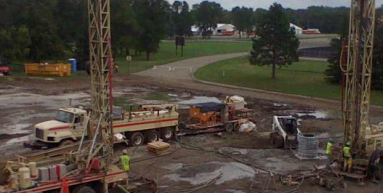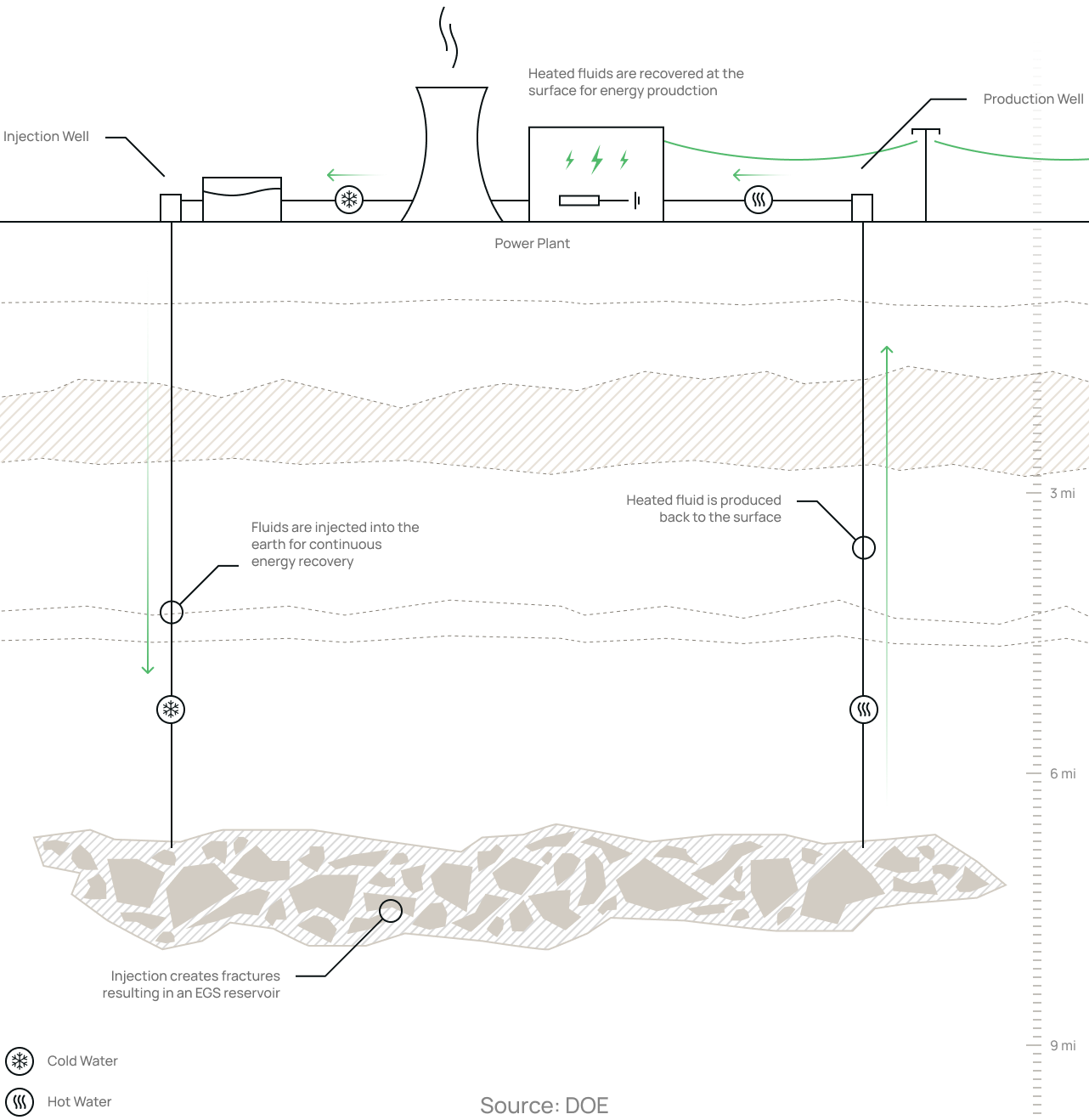The core of the Earth is as hot as the Sun and has been producing heat for billions of years and will continue for at least a billion more. Geothermal energy extracted from the crust of the Earth can provide always-on, baseload power. It is the only renewable resource with the potential to do so. Solar and wind are not reliable sources of baseload power because they are intermittent by nature.
Therefore, geothermal may hold the key to producing 100% clean electricity and heat available to everyone in the world. The challenge is drilling down into the ground deep enough and cheap enough to reach this nearly endless source of energy.
Vik Rao, former CTO of Halliburton
The century old $5 trillion global oil & gas industry includes companies that have mastered the art of drilling. They have global scale infrastructure and the people needed for drilling, management and operations. However, their drilling technologies are not designed for the high heat, high pressure and high corrosion conditions of deep geothermal.
What if the oil & gas industry had drop-in replacement technologies for drilling, casing, and producing geothermal energy? We intend to help these potential producers make that leap. Our approach is to stand on the shoulders of the oil & gas industry giants who have come before us and build on what they have learned to propel the world into a new era of clean energy production.

We are developing a suite of breakthrough drilling technologies, based on existing oil & gas drilling techniques, to boldly go where no oil rig has gone before

We start with the tried and true concept of an oil and gas exploration drill. Then, we change the method and geometry of drilling in such a way that we reduce the stress around the wellbore – in effect weakening the rock. By requiring less mechanical energy, we believe we will be able to drill faster, deeper and at a lower cost.
Faster than Conventional Drilling

We intend to use traditional oil and gas casing down several miles, then switch to our special single mono-bore casing to go all the way to superhot rock. This reduces “trip time” thereby further reducing the total drilling cost.

At about 5 to 6 miles down, the superhot rock is approximately 400°C. Injected water at this temperature becomes supercritical – a phase of water that is neither liquid nor gas. This supercritical water can hold 10 times more heat energy than lower temperature water. This “holy grail” of geothermal energy is not without challenges. At this temperature, the supercritical water is very corrosive. The world’s first superhot rock geothermal wells in Iceland failed due to corrosion. Therefore, we are developing breakthrough anti-corrosion coatings that can be used in well casings, valves, heat exchangers, and other surface equipment.

While everyone wants one, there are currently no commercially viable superhot rock geothermal plants due to the challenges we are attempting to overcome. The DeepPower Platform is being developed with 4 targets in mind:
The research and development of the DeepPower Platform is led by Professor Saeed Salehi at the University of Oklahoma through a sponsored research program funded by DeepPower. Dr. Salehi, Associate Professor, Mewbourne Professorship in Petroleum Engineering, has an extensive background in geological engineering. He previously worked as drilling and well engineer in the oil & gas industry and has more than ten year’s academic experience teaching and delivering university and industry customized courses.

The direct application of the DeepPower Platform is considered to be an Enhanced Geothermal System (EGS). EGS is a next generation geothermal technique and does not require natural hot water reservoirs for the development of geothermal power plants. In EGS, the developer basically creates its own reservoir by drilling down into solid hot rock, injecting water at a high pressure through one well, fracturing the rock to let the water pass through, then collecting the heated water through another well. Theoretically, this approach can create geothermal power plants anywhere in the world by drilling 5 to 6 miles deep.
According to the U.S. DOE, “this EGS-based resource is theoretically sufficient to heat every US home and commercial building for at least 8,500 years.”
While EGS at hot rock (200°C) is economically viable in many places, drilling to superhot rock (400°C) represents a quantum leap forward, with respect to cost, size, efficiency and global scale.

120 MW gross


160 MW gross


Source: Cladohos et al, 2018, Stanford Geothermal Workshop